Trondheim's Kristiansten Festning is a historic hilltop fortress standing guard over the town. It played an important defensive role but today is a popular recreation area.
Built in the 17th century after a devastating fire that ravaged most of the town, it has an interesting story and the views alone make it well worth a visit.
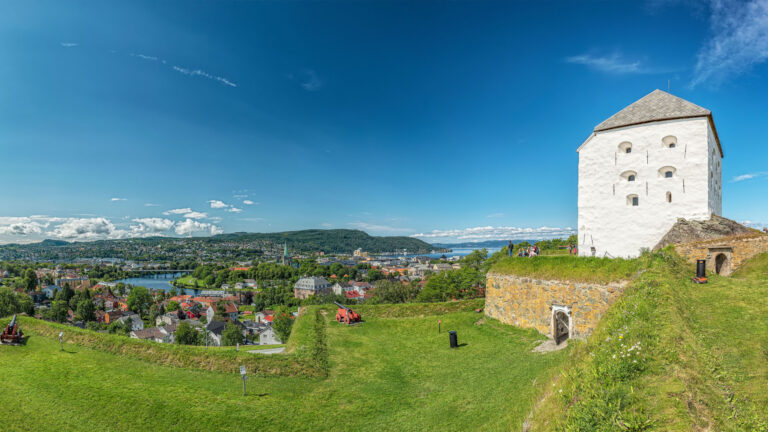
If the most renowned historic building in Trondheim is the Nidarosdomen medieval cathedral, the next would have to be the Kristiansten fortress.
So whether you're a military history buff or are planning to visit the fortress during an upcoming stay in Trondheim, we have all the information you need right here.
Let us guide you through the history of Kristiansten festning, its current role as a gathering place, its symbolic link to the monarchy, and all you have to know to plan a visit.
The history of Kristiansten festning
To understand the historical importance of the fortress, we have to look at its geography. It is built on a hill overlooking much of the city, but particularly the areas of Bakklandet, Pappenheim and Møllenberg.
Even more critically, it overlooks the old town bridge (Gamle Bybro), which at the time of the fortress's construction, in 1682, was the city's most important access point. The centre of Trondheim, was, and still is, located on a peninsula delimited by the meandering of the Nidelva river on three sides, and by the fjord on the fourth.
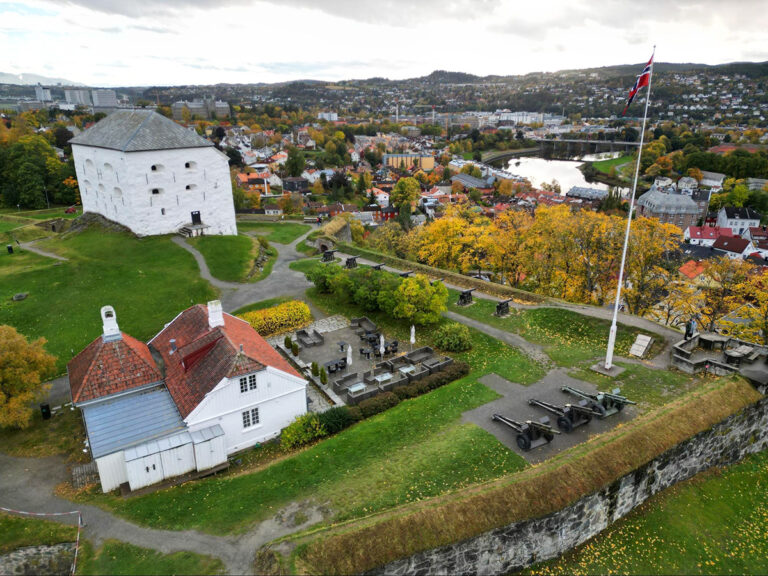
For these reasons, controlling the area where the fortress lies has always been strategically important from a military point of view. When Swedish troops occupied the city, first in 1564 and then in 1658, they did it by occupying that same area.
It is not surprising then that when large swathes of Trondheim were devastated by a fire, rebuilding plans included a fortress. The man behind the planning was called Johan Caspar von Cicignon.
He devised plans not only for the fortress, but also for the layout of the entire city centre, with broad avenues intended to limit the spread of any future fires. Together with other fortifications along the river and at Skansen, Kristiansten ensured the protection of Trondheim.
The Great Northern War
The fortress would prove its usefulness not four decades after it was built, towards the end of the Great Northern War, when Charles XII of Sweden sent troops to besiege Trondheim. The heavily armed and well-provisioned fortress proved very dangerous indeed for the Swedes to approach.
Meanwhile, supplies were a problem for the Swedish army. The local peasantry, still remembering previous Swedish invasions, were very unhelpful to the invading forces.
In the end, the Swedes retreated to the south of town, but disease nearly halved their forces. The retreat towards Sweden would be catastrophic: snow, cold and strong winds would kill or otherwise disable the entirety of the remaining force.
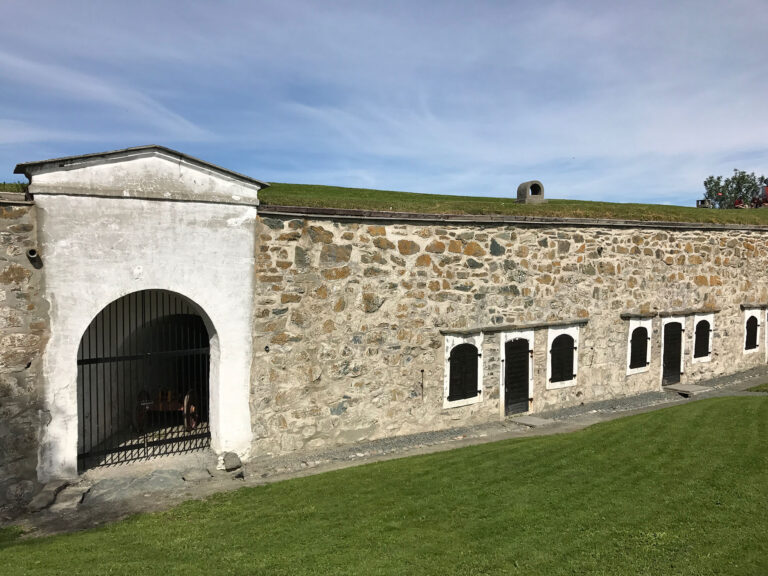
The debacle was later compared to Napoleon's disastrous retreat from Moscow, which would take place about a century later.
The Second World War
German troops invaded Trondheim in April of 1940, occupying the whole town without being targeted by a single shot. The nazi forces quickly saw the potential of the fortress, not only as a strategically significant high ground, but also, and most importantly, as a symbol.
They started refurbishing the by then derelict fort, and installed anti-air defences onsite. Around 30 Norwegian members of the resistance were executed by the nazis at the fortress during the course of the war, as well as an undetermined number of foreigners.
After the war, a number of traitors and war criminals were also executed on the premises.
Kristiansten fortress today
The Kristiansten fortress underwent extensive renovations in preparation for the 1000th anniversary of Trondheim, in 1997. It is now owned by the Norwegian government, and is listed as a historic landmark.
Royal birthdays and other special occasions such as Constitution Day are marked by gun salutes from the canons still present at the fortress. Today, the main building is a museum containing exhibits about the fortress's history.
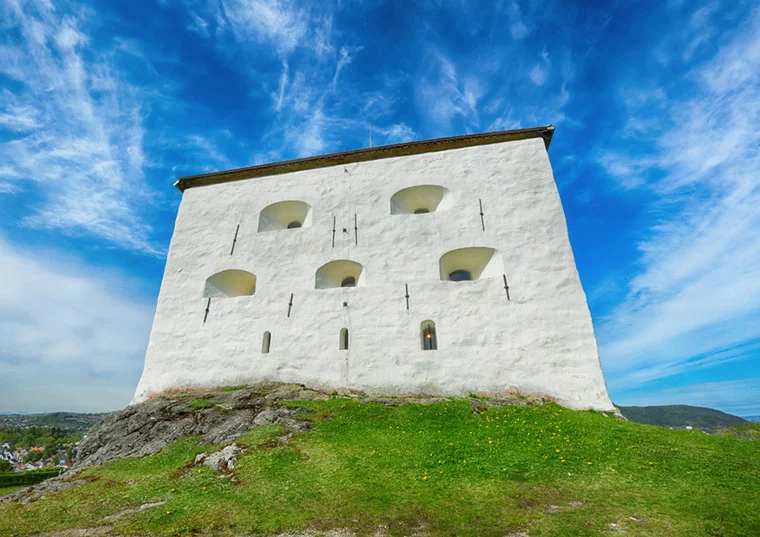
It is open 10-16 Wednesday to Saturday and 12-16 Sunday during the summer (mid-June to mid-September). Entrance, astonishingly for Norway, is free.
A café in the old commander's lodgings has the same opening hours as the museum, and can also be rented for private parties.
The grounds on the eastern and northern sides of the fortress serve as a popular park all year round. It is a great location for a picnic, and concerts often take place here during the summer months.
Visiting Kristiansten fortress
If you have the time, take a stroll on the Elgeseter bridge. This will give you stunning views of the fortress overlooking the river, with the cathedral as a bonus.
Continue then past the cathedral to Gamle Bybro, the old town bridge, which is in itself well worth a visit. Straight up from the bridge is a steep hill.
Follow this, and you will pass along a quiet street meandering through a residential area until you reach the base of the fortress. From there, you can either loop around or take the steep way up.
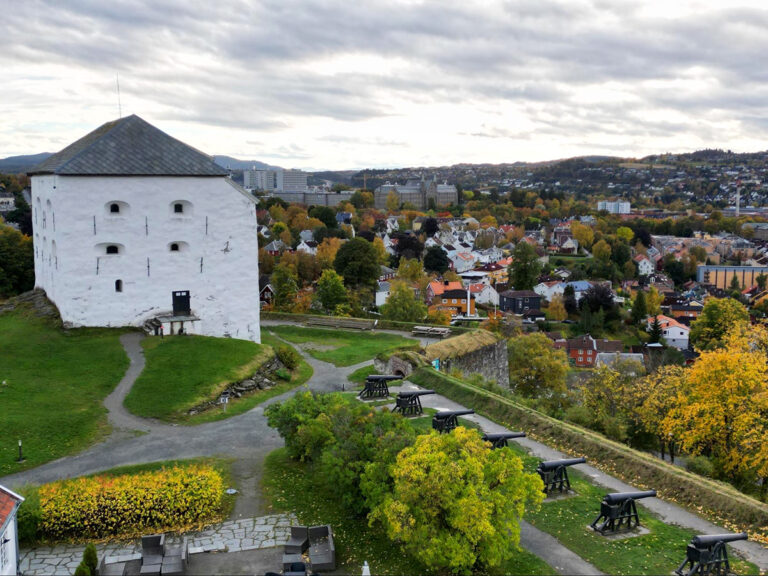
If walking up steep hills isn't your thing, take bus 25 towards Vikåsen and get off at the Festningsgata stop. From the city centre (Prinsens gate P1 stop), this is just a seven minute ride.
Once you're there, be sure to take in the views. To the South, you can see the Vassfjellet mountain, with its antenna tower. To the West is the river and the cathedral, with the enormous and popular Bymarka outdoors area in the background.
To the North is the city itself, with the fjord and its mountains in the background. To the East, you can see the Tyholt tower, a TV tower with a revolving restaurant that is also worth a visit if you want a good view of the town and surrounding area.

